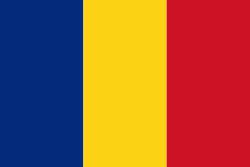Racovița (Comuna Racoviţa)
Racovița (Racovița-Olt until 1931; Rakowitza or Rakevets; Oltrákovica or colloquially Rákovica) is a commune in Sibiu County, Transylvania, Romania. It has a population of 2,884 inhabitants (2002 census) and is composed of two villages, Racovița and Sebeșu de Sus (Oltfelsősebes).
The first official mention of the then-village was in a May 22, 1443 "gift" act of John Hunyadi. Church documents first mention the village on July 8, 1647, when George I Rákóczi names Ion din Ţichindeal as archpriest over 17 villages around Sibiu, including Racovița. The rich history of the village is linked to the military border with Transylvania established by empress Maria Theresa of Austria in 1765. At the time, Racovița was part of the 7th Company of the First Border Regiment in Orlat.
Starting in 1698, before the village was completely militarized, the village and its area were confronted with severe religious conflicts due to the decision made by the Alba-Iulia Orthodox Church to unite with the Catholic Church.
Soldiers and villagers participated enthusiastically in the Hungarian Revolution of 1848. Once the military border was abolished in 1851, important village members took initiative to manage the Regiment School Funds and became actively involved in the Transylvanian Association for Romanian Literature and the Culture of Romanian People.
During World War I, soldiers from Racovița served in the army from 1916 to 1918 and received distinctions for fighting against "Russian Poland", Galicia, Albania, Italy, Serbia. and even France.
Racovița Commune is situated at the base of Suru Peak (2281 m) on the contact between the foothills of the Făgăraș Mountains and the low terrace of the floodplain, on the left bank of the river Olt, at an altitude of 385 meters. The commune borders to the north and northeast with the town Avrig; the border, which extends from the confluence of the small river Mârșa with the Olt to the Sorliței Peak, was established after the year 1200 and is marked with border signs called 'morminți'.
The first official mention of the then-village was in a May 22, 1443 "gift" act of John Hunyadi. Church documents first mention the village on July 8, 1647, when George I Rákóczi names Ion din Ţichindeal as archpriest over 17 villages around Sibiu, including Racovița. The rich history of the village is linked to the military border with Transylvania established by empress Maria Theresa of Austria in 1765. At the time, Racovița was part of the 7th Company of the First Border Regiment in Orlat.
Starting in 1698, before the village was completely militarized, the village and its area were confronted with severe religious conflicts due to the decision made by the Alba-Iulia Orthodox Church to unite with the Catholic Church.
Soldiers and villagers participated enthusiastically in the Hungarian Revolution of 1848. Once the military border was abolished in 1851, important village members took initiative to manage the Regiment School Funds and became actively involved in the Transylvanian Association for Romanian Literature and the Culture of Romanian People.
During World War I, soldiers from Racovița served in the army from 1916 to 1918 and received distinctions for fighting against "Russian Poland", Galicia, Albania, Italy, Serbia. and even France.
Racovița Commune is situated at the base of Suru Peak (2281 m) on the contact between the foothills of the Făgăraș Mountains and the low terrace of the floodplain, on the left bank of the river Olt, at an altitude of 385 meters. The commune borders to the north and northeast with the town Avrig; the border, which extends from the confluence of the small river Mârșa with the Olt to the Sorliței Peak, was established after the year 1200 and is marked with border signs called 'morminți'.
Map - Racovița (Comuna Racoviţa)
Map
Country - Romania
 |
 |
| Flag of Romania | |
Europe's second-longest river, the Danube, rises in Germany's Black Forest and flows southeasterly for 2857 km, before emptying into Romania's Danube Delta. The Carpathian Mountains cross Romania from the north to the southwest and include Moldoveanu Peak, at an altitude of 2544 m.
Currency / Language
| ISO | Currency | Symbol | Significant figures |
|---|---|---|---|
| RON | Romanian leu | lei | 2 |
| ISO | Language |
|---|---|
| HU | Hungarian language |
| RO | Romanian language |















